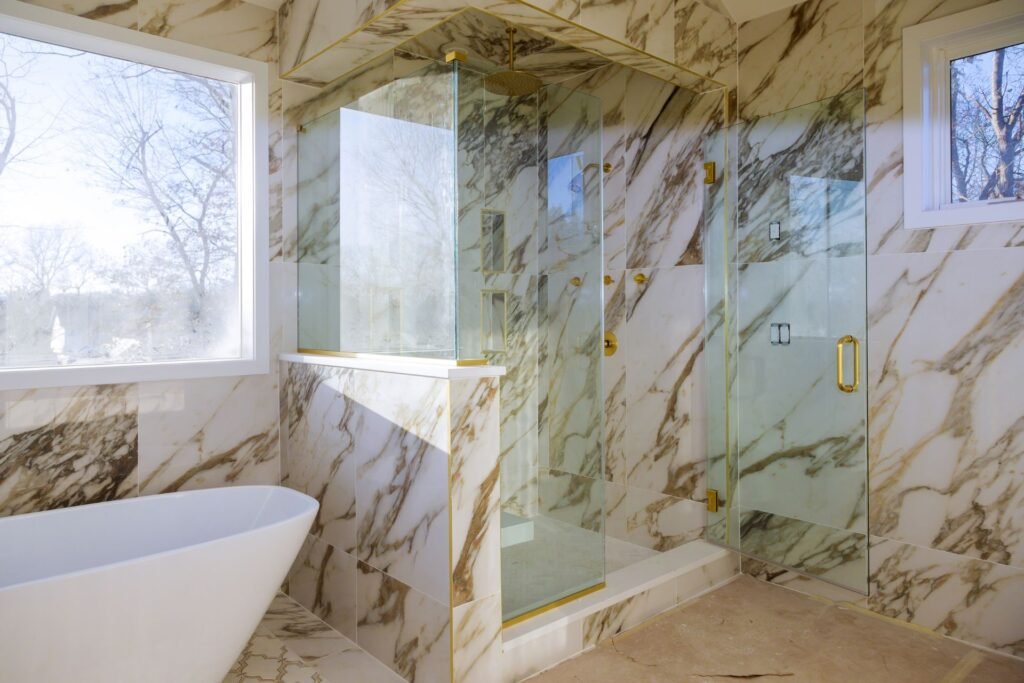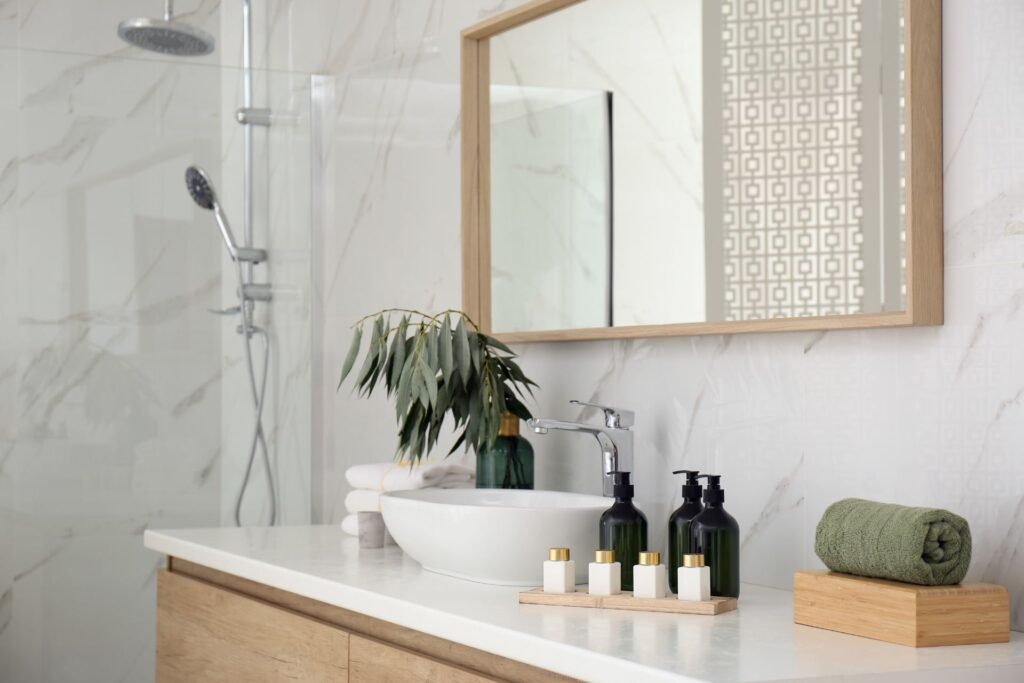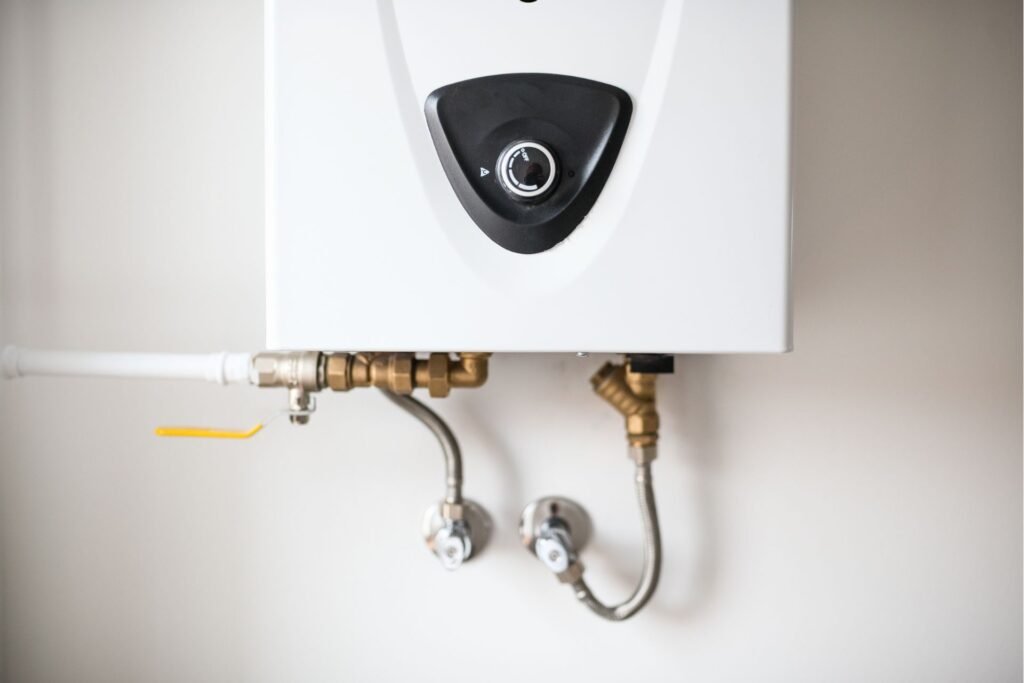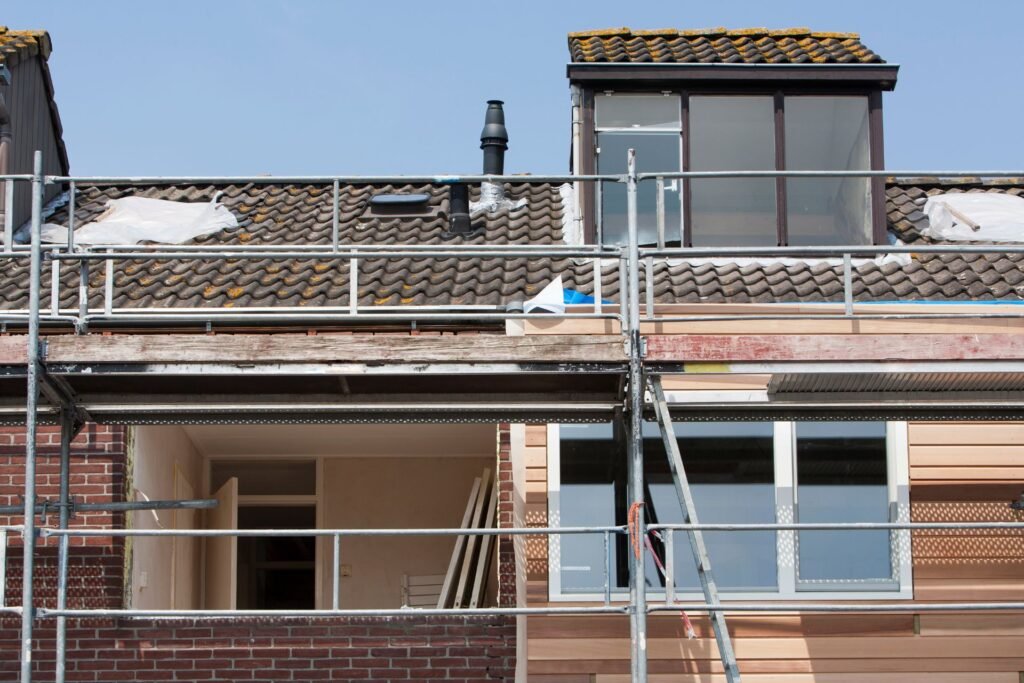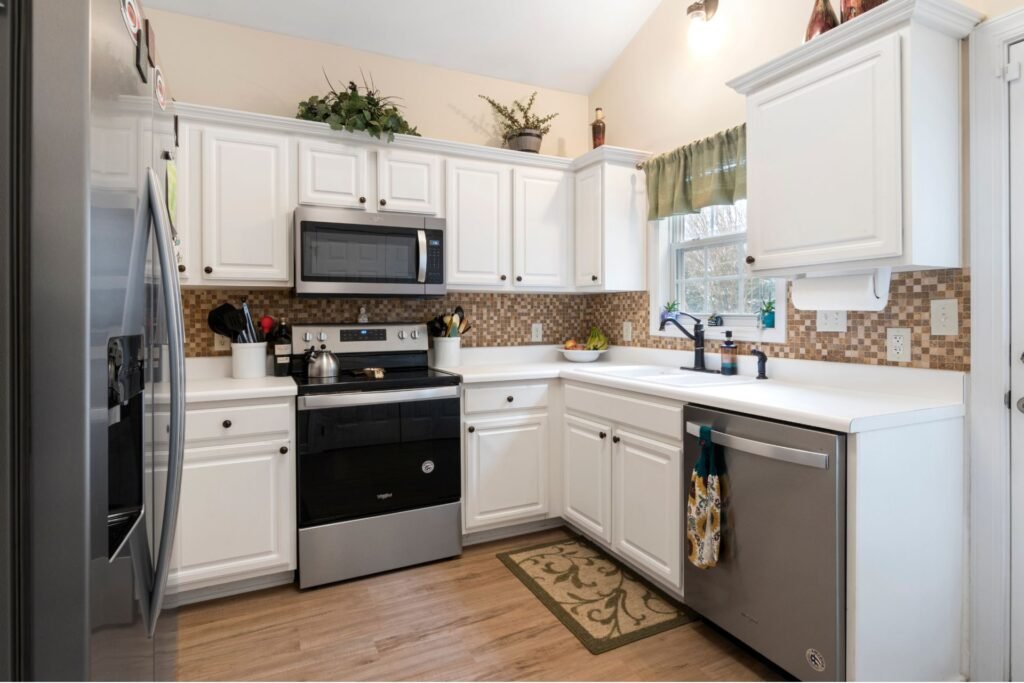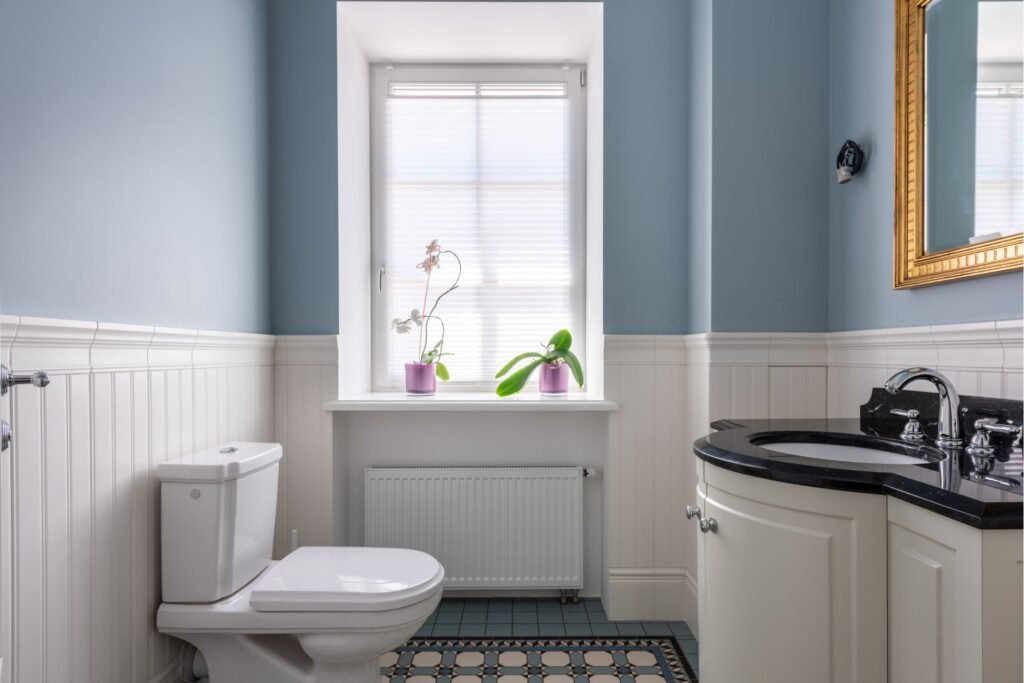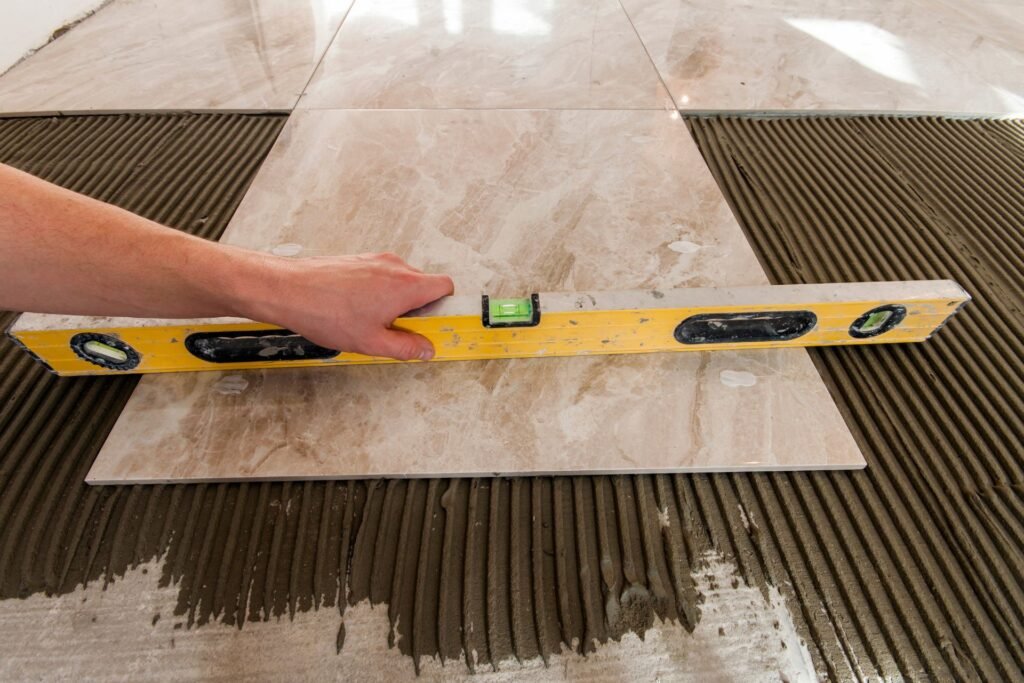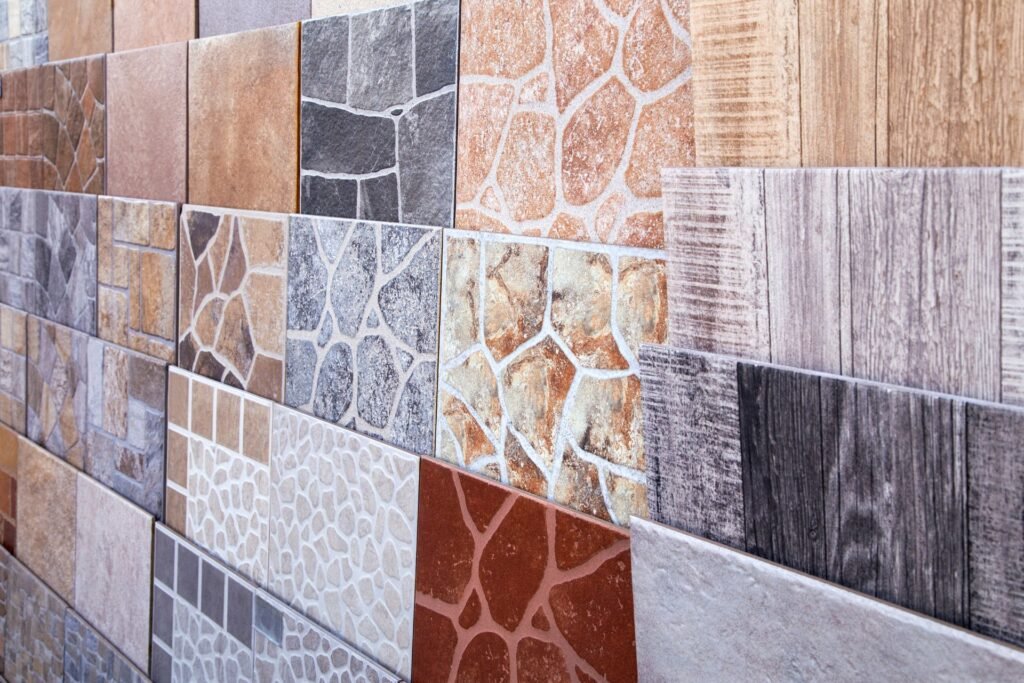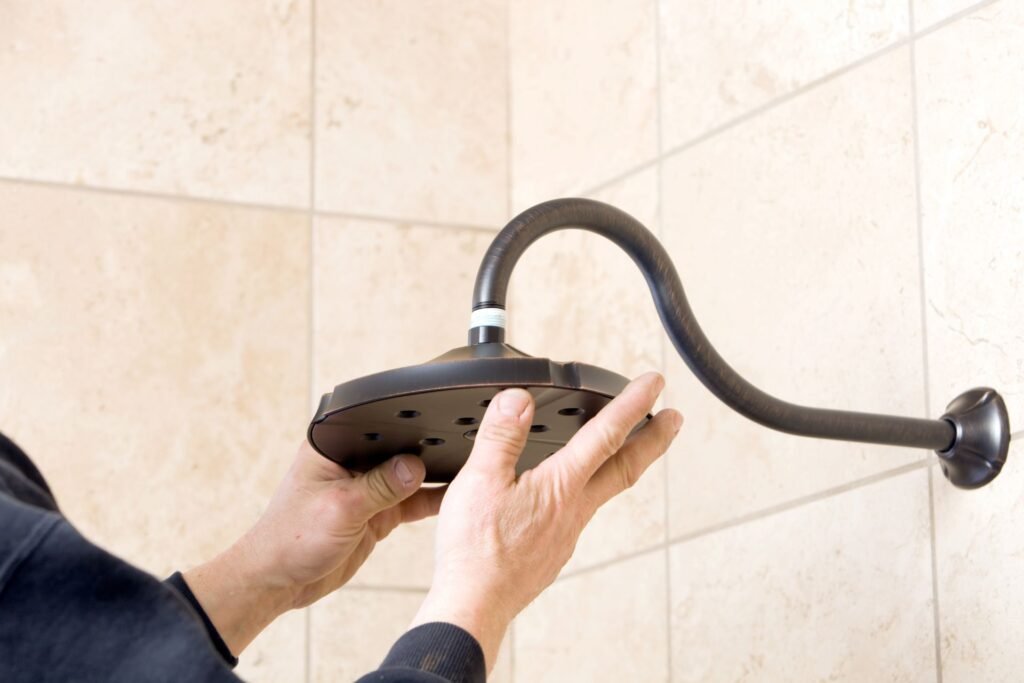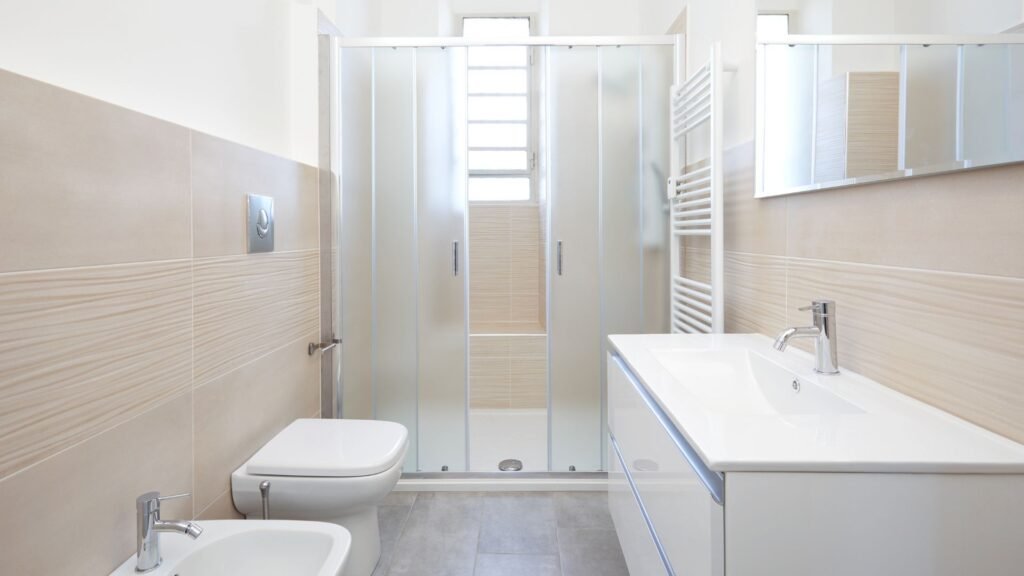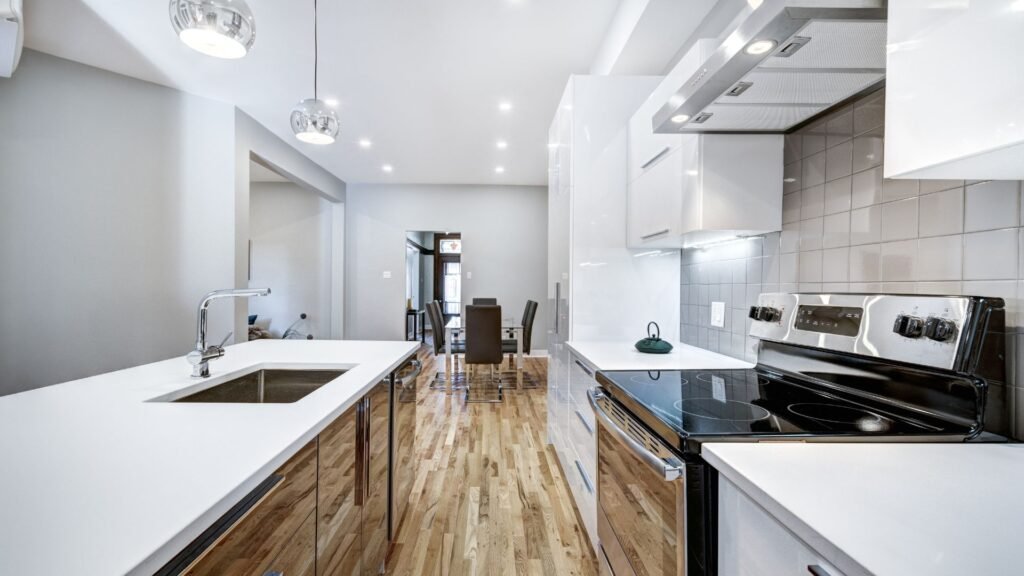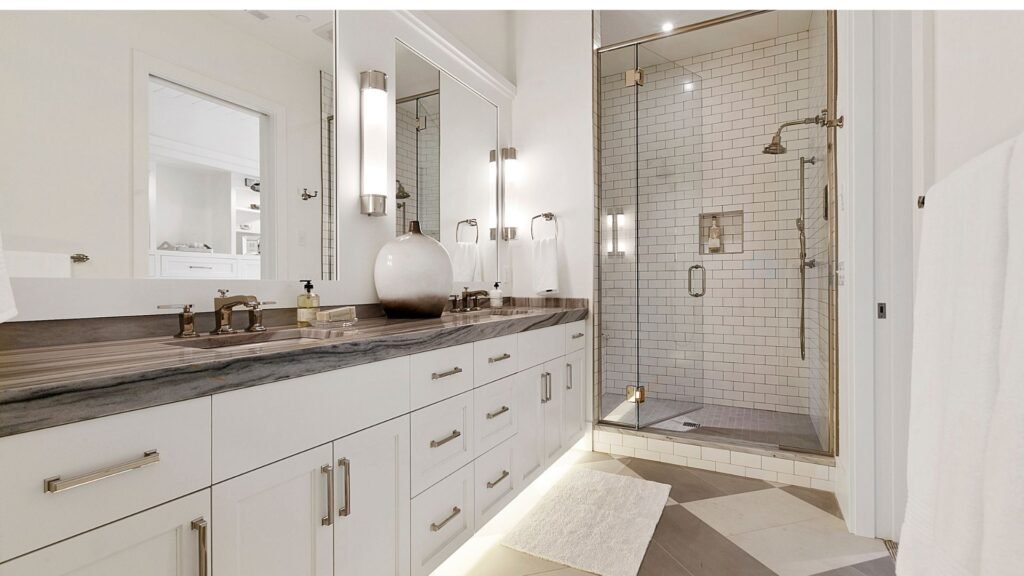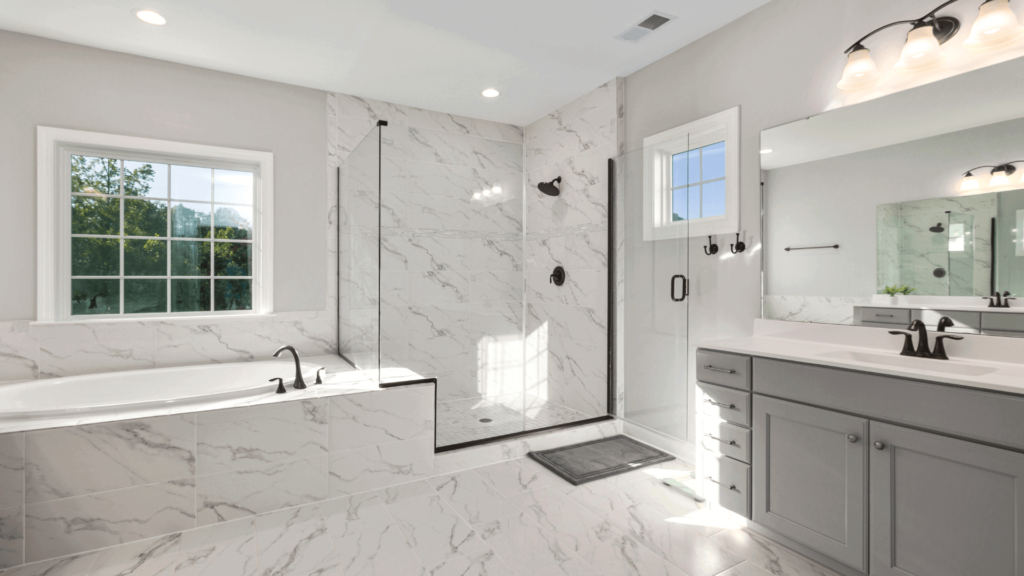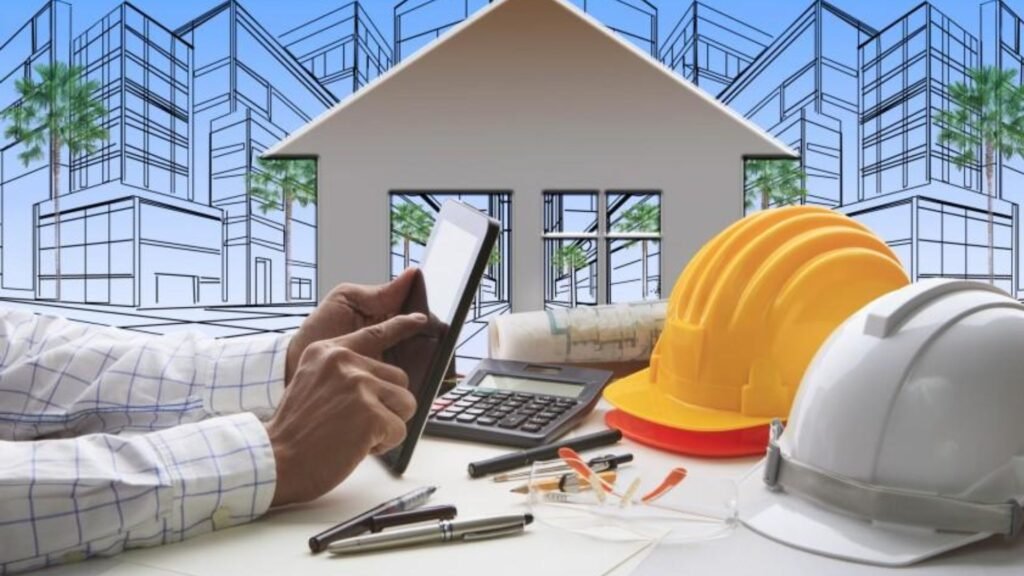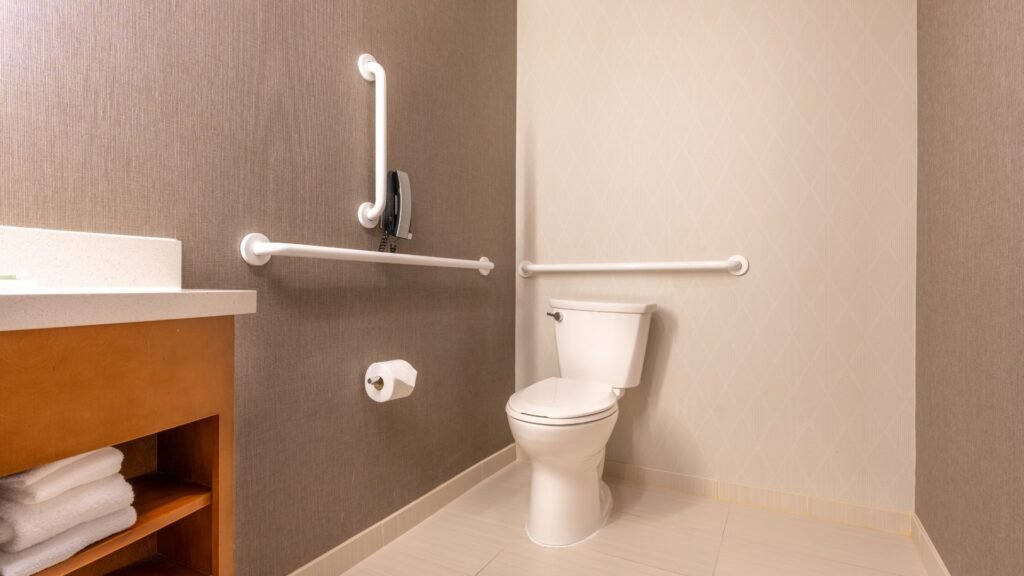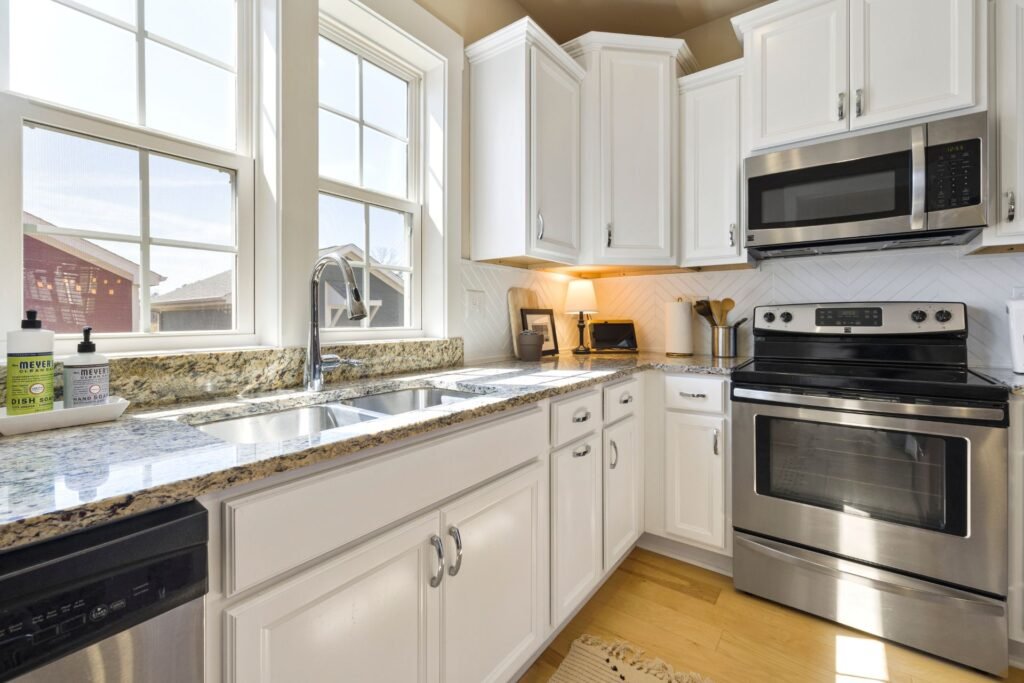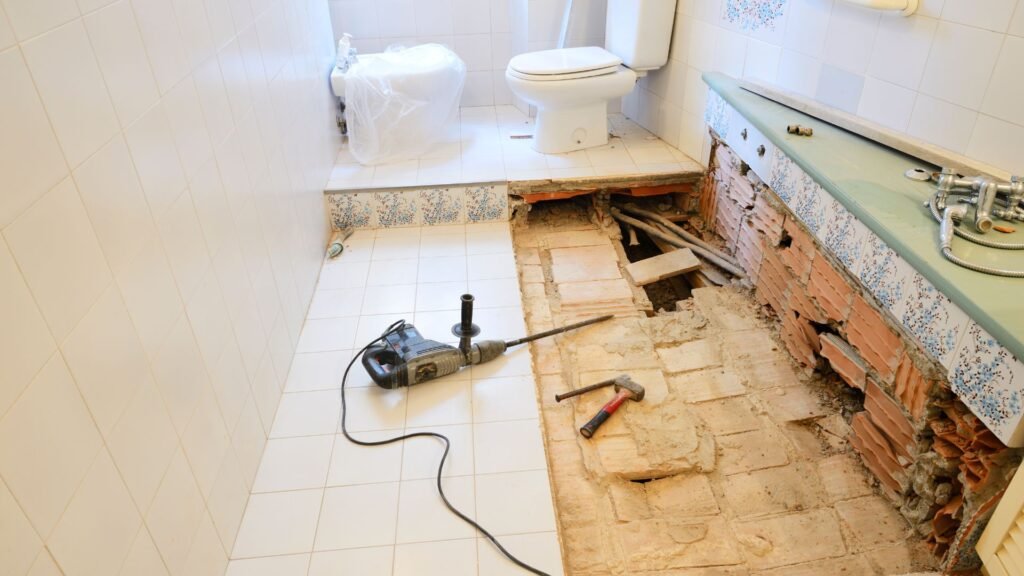Welcome to your ultimate guide on choosing the best material for bathroom walls in New Zealand. Whether you’re renovating an outdated space or building a new home, selecting the right wall material is crucial for both functionality and style. With NZ’s unique climate, particularly the high humidity levels in bathrooms, it’s important to find a material that is not only moisture-resistant but also durable and easy to maintain. In this post, we’ll explore the top bathroom wall materials available, considering factors like cost, aesthetics, and ease of installation, to help you make an informed decision that suits your needs and budget.
The best material for bathroom walls in New Zealand depends on your needs and style. Popular options include tiles for moisture resistance and easy cleaning, acrylic panels for budget-friendly renovations, and stone veneer for a luxurious finish. Each material offers unique benefits in terms of durability, aesthetics, and cost, making it essential to consider moisture resistance, ease of maintenance, and budget when choosing the right material for your bathroom.
- Factors To Consider When Choosing Bathroom Wall Materials
- Top Materials For Bathroom Walls In New Zealand
- Comparing Materials Based On Cost And Durability
- Environmental Impact Of Bathroom Wall Materials
- Design And Style Inspiration
- Best Practices For Installation And Maintenance
- FAQs: About Best Material For Bathroom Walls NZ
- What is the best material for bathroom walls in New Zealand?
- What are the most affordable bathroom wall materials?
- How do I choose a bathroom wall material for a high-humidity environment?
- Can I install bathroom wall materials myself, or do I need a professional?
- How do I maintain bathroom wall materials?
- Are there eco-friendly bathroom wall material options?
- What bathroom wall materials are best for a small bathroom?
- Can I mix different bathroom wall materials in one space?
- What is the most durable bathroom wall material?
- How much does it cost to install bathroom wall materials in New Zealand?
- Conclusion
Factors To Consider When Choosing Bathroom Wall Materials
When selecting materials for your bathroom walls, there are several crucial factors to consider that can significantly impact the overall functionality, durability, and aesthetic appeal of your bathroom. Given the specific environmental conditions in New Zealand, such as high humidity levels, these factors become even more important. Here’s a breakdown of the key considerations to keep in mind:
Moisture Resistance
Moisture resistance is one of the most critical factors to consider when choosing bathroom wall materials, particularly in New Zealand’s bathroom environments, which are prone to high levels of humidity due to the coastal and temperate climate. In such a damp environment, the walls are constantly exposed to steam, water splashes, and condensation, which can lead to mold growth, mildew, and even structural damage if the materials are not properly resistant to moisture. Opting for materials that can withstand prolonged exposure to water, such as tiles, vinyl, or moisture-resistant drywall, will help prevent these issues, ensuring the longevity of your bathroom. Moreover, moisture-resistant materials contribute to a healthier indoor environment, as they reduce the likelihood of mold and bacteria buildup, which can affect your family’s health.
Durability
Durability is another essential factor, especially in a space that endures frequent contact with water, cleaning products, and physical wear and tear. Bathrooms are high-traffic areas, and the constant exposure to moisture and the need for regular cleaning can quickly wear down materials that aren’t built to last. Durable materials such as ceramic tiles, porcelain, or stone not only handle the day-to-day rigors of bathroom life but also resist scratches, stains, and fading over time. When choosing durable materials, it’s important to consider how well they can stand up to the demands of a busy household while maintaining their appearance. Investing in quality materials may have a higher upfront cost, but the longevity and reduced need for replacements or repairs will save money in the long run.
Aesthetics
The aesthetic appeal of your bathroom wall material plays a significant role in the overall design and feel of your bathroom. The material you choose should complement your style, whether you’re aiming for a modern, minimalist look or a more traditional, cozy feel. Tiles, for example, offer a wide range of colors, textures, and patterns that can help create a luxurious or artistic atmosphere. On the other hand, materials like natural stone or wood (when treated properly) can bring warmth and natural beauty to the space. The visual impact of your bathroom walls shouldn’t be underestimated, as they set the tone for the room and can even enhance the sense of space and light, particularly in smaller bathrooms. Consider how the material will work with your bathroom’s fixtures, lighting, and overall design scheme.
Ease of Installation and Maintenance
Ease of installation and maintenance is another important factor when deciding on bathroom wall materials. Some materials, like certain types of tiles or panels, can be relatively straightforward to install, potentially saving on labor costs. On the other hand, materials like natural stone or intricate mosaic tiles may require specialized installation, which can drive up costs. Additionally, easy maintenance is key to keeping your bathroom looking fresh and clean over time. Materials like porcelain tiles or acrylic panels are easy to wipe down and don’t require frequent resealing or special cleaning products. In contrast, materials like natural stone may need regular sealing to prevent water damage, and grout lines in tiled walls can become stained or develop mildew without proper care. Choosing a material that balances your desired look with ease of upkeep can reduce both long-term maintenance efforts and costs.
Cost and Budget
Finally, cost is a crucial factor in selecting the right bathroom wall material, as it encompasses not only the price of the material itself but also installation and long-term maintenance costs. For example, while tiles may be more affordable upfront compared to natural stone, the installation costs can vary significantly based on the complexity of the design. Additionally, materials that require specialized installation or ongoing maintenance can lead to higher long-term expenses. It’s essential to set a budget and evaluate the total cost of ownership, not just the initial price. This includes considering the potential savings of choosing a more durable, moisture-resistant material that requires less frequent replacement or repairs. In New Zealand, where building and renovation costs can be higher due to supply and demand dynamics, careful planning and budgeting are essential to ensure that your bathroom renovation or build stays within your financial limits while still delivering on your design and performance needs.
By taking these factors into account—moisture resistance, durability, aesthetics, ease of installation and maintenance, and cost—you can make an informed decision that balances both practicality and style, ensuring your bathroom walls stand the test of time in New Zealand’s unique environment.

Top Materials For Bathroom Walls In New Zealand
When designing or renovating a bathroom in New Zealand, choosing the right wall material is critical, not just for aesthetic appeal but also for practicality and long-term durability. New Zealand’s humid climate and varying weather conditions mean that bathroom walls must withstand moisture, heat, and daily wear and tear. Here’s a breakdown of some of the top materials suited for New Zealand bathrooms, detailing their advantages, disadvantages, and best use cases to help you make an informed decision.
Tiles
Tiles are one of the most popular choices for bathroom walls due to their durability and visual versatility. In New Zealand, where moisture levels can be high, tiles are an excellent option for keeping bathrooms looking sleek and staying functional.
- Types of Tiles: The most common types are ceramic, porcelain, and glass tiles. Ceramic tiles are widely available and cost-effective, while porcelain tiles are denser, less porous, and offer greater moisture resistance. Glass tiles, on the other hand, bring a glossy, modern look and can reflect light to make the space feel larger.
- Advantages: One of the biggest benefits of tiles is their moisture resistance. They can withstand splashes from showers and sinks without damage. Additionally, tiles offer variety in styles—from minimalist white to bold, patterned options—so they can suit any design preference. They’re also easy to clean, which is a significant advantage in a room where hygiene is a top priority.
- Disadvantages: One of the main drawbacks of tiles is grout maintenance. Over time, grout can accumulate mold or discolor, requiring regular cleaning or resealing. Additionally, installation costs for tiles can be higher compared to other materials due to the labor-intensive nature of the work.
- Best Use Cases: Tiles are ideal for high-humidity areas, such as showers and splash zones near sinks. They’re also perfect for feature walls to create a focal point in the bathroom or for homeowners who want to incorporate modern designs with bold or intricate tile patterns.
Acrylic Panels
Acrylic panels are an affordable and highly practical solution for bathroom walls in New Zealand, especially for those looking to renovate on a budget without compromising on quality.
- Advantages: One of the main selling points of acrylic panels is their affordability. They are typically less expensive than tiles and offer easy maintenance, as they are non-porous and can be wiped down effortlessly. Furthermore, they are available in a wide variety of designs, including faux tile patterns, which allow homeowners to mimic more expensive materials.
- Disadvantages: Despite their practicality, acrylic panels lack the design flexibility of tiles, as they tend to come in larger, pre-designed sheets. Over time, they may also be prone to discoloration, particularly in areas exposed to harsh sunlight or chemicals.
- Best Use Cases: Acrylic panels are great for budget-friendly renovations or rental properties where easy maintenance is a priority. They also suit minimalist bathrooms, providing a sleek, clean finish without the high costs associated with other materials.
Waterproof Paint
Waterproof paint is a simple yet effective option for those looking to refresh their bathroom walls without breaking the bank. It’s a great material to use either on its own or in conjunction with other materials.
- Advantages: Budget-friendly and easy to apply, waterproof paint can be a go-to for those seeking a quick update. It is available in virtually any color, making it easy to customize and coordinate with the rest of the bathroom.
- Disadvantages: While it’s affordable and easy to use, waterproof paint doesn’t offer the same durability or moisture resistance as materials like tiles or panels. It may require regular maintenance, including touch-ups and repainting, especially in high-humidity areas.
- Best Use Cases: Waterproof paint is best suited for low-budget renovations or as an accent to complement other materials, such as tiles or acrylic panels. It’s ideal for areas of the bathroom that are less exposed to moisture, such as upper walls or ceilings.
PVC Panels
PVC panels are a smart choice for homeowners looking for a waterproof, low-maintenance option for bathroom walls.
- Advantages: PVC panels are completely waterproof, making them an excellent option for bathrooms in New Zealand’s humid environment. They are also lightweight and low-cost, making them easy to install and maintain.
- Disadvantages: The downside to PVC panels is their less luxurious appearance. While they are functional, they don’t offer the same high-end look as materials like tiles or stone veneer. As a result, they may not suit high-end bathroom designs.
- Best Use Cases: PVC panels work well in cost-effective solutions for family bathrooms, where durability and ease of maintenance are important. They are also a popular choice in commercial settings like gyms or public restrooms.
Stone Veneer
For a touch of luxury and natural beauty, stone veneer is a material that can elevate the aesthetics of any bathroom.
- Advantages: Stone veneer offers a natural look that is hard to replicate with other materials. It’s also known for its excellent durability and moisture resistance, making it a suitable option for high-humidity areas.
- Disadvantages: The primary drawback is the cost. Stone veneer is expensive, and because it’s heavier than other materials, it often requires professional installation, which adds to the overall expense.
- Best Use Cases: Stone veneer is perfect for luxurious bathrooms or as a feature wall to create a high-end, spa-like atmosphere. It’s ideal for those willing to invest in a premium finish for their bathroom.
Glass Panels
For a sleek, modern aesthetic, glass panels are an excellent choice. They add a touch of sophistication while keeping the bathroom light and airy.
- Advantages: Glass panels provide a sleek, modern aesthetic that is difficult to match. They are also easy to clean and, like PVC and tiles, are completely waterproof.
- Disadvantages: Glass panels are on the higher end of the cost spectrum and generally require professional installation. They can also be prone to scratches, which may detract from their appearance over time.
- Best Use Cases: Glass panels are ideal for modern bathrooms, particularly in homes with a minimalist design. They can also help to create a sense of space in smaller bathrooms by allowing light to flow through the room.
Timber Cladding (Treated)
For those looking to create a warm, rustic ambiance in their bathroom, treated timber cladding offers a unique and natural option.
- Advantages: Treated timber cladding brings a warm, natural look to the bathroom. When properly treated, the wood becomes moisture-resistant, making it suitable for use in damp environments.
- Disadvantages: Timber cladding requires regular maintenance to ensure that the wood remains protected from moisture and other environmental factors. Without proper care, the wood can become susceptible to rot or warping.
- Best Use Cases: Timber cladding is perfect for rustic or Scandinavian-style bathrooms, where a natural, warm aesthetic is desired. It works best in bathrooms with good ventilation to minimize the risk of moisture damage.
The material you choose for your bathroom walls in New Zealand should not only align with your design preferences but also cater to the unique climate and humidity conditions found here. Whether you prefer the luxury of stone veneer or the practicality of acrylic panels, understanding the pros and cons of each material will help you create a bathroom that’s both beautiful and durable.

Comparing Materials Based On Cost And Durability
When choosing materials for your bathroom, balancing cost and durability is crucial. Especially in New Zealand, where high humidity and frequent moisture exposure can significantly impact the longevity of materials, it’s essential to weigh both factors carefully.
Cost Comparison
When comparing costs, it’s essential to consider not only the price of the materials themselves but also the installation costs. Here’s a breakdown of common bathroom materials, ranked from most to least expensive, including potential installation fees.
1. Natural Stone (e.g., marble, granite): Natural stone is by far the most expensive option for bathroom walls and floors. The material itself can be costly, but installation also requires skilled labor, which adds to the overall expense. Marble or granite can cost upwards of $300 per square meter, with installation fees potentially doubling that cost. However, the luxurious appearance may be worth the investment for some homeowners.
2. Ceramic and Porcelain Tiles: Ceramic and porcelain tiles are popular choices due to their balance of affordability and aesthetic appeal. Prices typically range from $50 to $150 per square meter, depending on the quality and design. Installation costs vary depending on the complexity of the design and the size of the bathroom but generally fall between $50 and $100 per square meter.
3. Vinyl: Vinyl flooring or wall coverings are much more affordable, with costs ranging from $20 to $60 per square meter. Installation fees are relatively low as well, often totaling around $20 to $50 per square meter, making it a budget-friendly option for many homes.
4. Paint and Plasterboard: If you’re considering a more straightforward finish, such as waterproof paint over plasterboard, the costs are minimal compared to other materials. Paint costs range from $10 to $30 per square meter, with installation or labor fees for plasterboard falling between $15 and $40 per square meter.
Durability
Durability plays a vital role in determining the true value of any bathroom material. In New Zealand’s humid climate, materials are exposed to high moisture levels, which can cause warping, cracking, or mildew growth if the material isn’t up to the task.
1. Natural Stone: Natural stone is highly durable and can last for decades if properly sealed and maintained. However, it is porous and requires regular sealing to protect against water damage and staining. In high-humidity environments, some types of stone can be prone to mildew if not adequately maintained.
2. Ceramic and Porcelain Tiles: These tiles are highly durable and water-resistant, making them a fantastic option for bathrooms. They’re virtually impervious to moisture and are easy to clean, withstanding the humid conditions typical of New Zealand bathrooms. They’re also highly resistant to scratches and stains, making them a long-lasting option.
3. Vinyl: Vinyl is surprisingly durable in bathroom settings. It’s fully waterproof, which makes it ideal for high-humidity environments. However, it’s prone to scratching and can tear or dent under heavy impact, which may reduce its lifespan in high-traffic areas.
4. Paint and Plasterboard: While waterproof paints can be very durable, they are still susceptible to chipping, peeling, or bubbling over time, particularly in areas where moisture is consistently present. Even with moisture-resistant plasterboard, walls can deteriorate faster if there is prolonged exposure to humidity without adequate ventilation.
Longevity
How long your chosen material lasts will depend on both its inherent qualities and how well it’s maintained. Understanding the typical lifespan of these materials helps put their initial cost into perspective.
1. Natural Stone: Natural stone, if correctly maintained, can last a lifetime—up to 100 years or more. The initial investment may be steep, but its longevity makes it a cost-effective choice in the long run. However, regular sealing and cleaning are essential to maintain its durability.
2. Ceramic and Porcelain Tiles: These tiles typically have a lifespan of 20 to 50 years, depending on the quality of installation and maintenance. They offer excellent value for money due to their long lifespan and minimal maintenance requirements.
3. Vinyl: Vinyl generally lasts around 10 to 20 years, depending on the quality of the material and the level of wear and tear. It’s a cost-effective solution in the short term but may need replacement sooner than higher-end materials.
4. Paint and Plasterboard: Paint typically needs to be refreshed every 5 to 10 years, depending on the exposure to moisture and the type of paint used. Plasterboard may last longer, but it is more vulnerable to moisture damage in humid environments, meaning it may need replacing after 15 to 20 years if moisture issues arise.
Ultimately, when comparing materials based on cost and durability for your bathroom, it’s essential to think long-term. Investing more upfront in materials like natural stone or ceramic tiles can pay off with decades of use, whereas more affordable options like vinyl or paint might require replacement sooner. In New Zealand’s uniquely humid conditions, durability should be a primary consideration to ensure you’re getting the best value for your money over time.
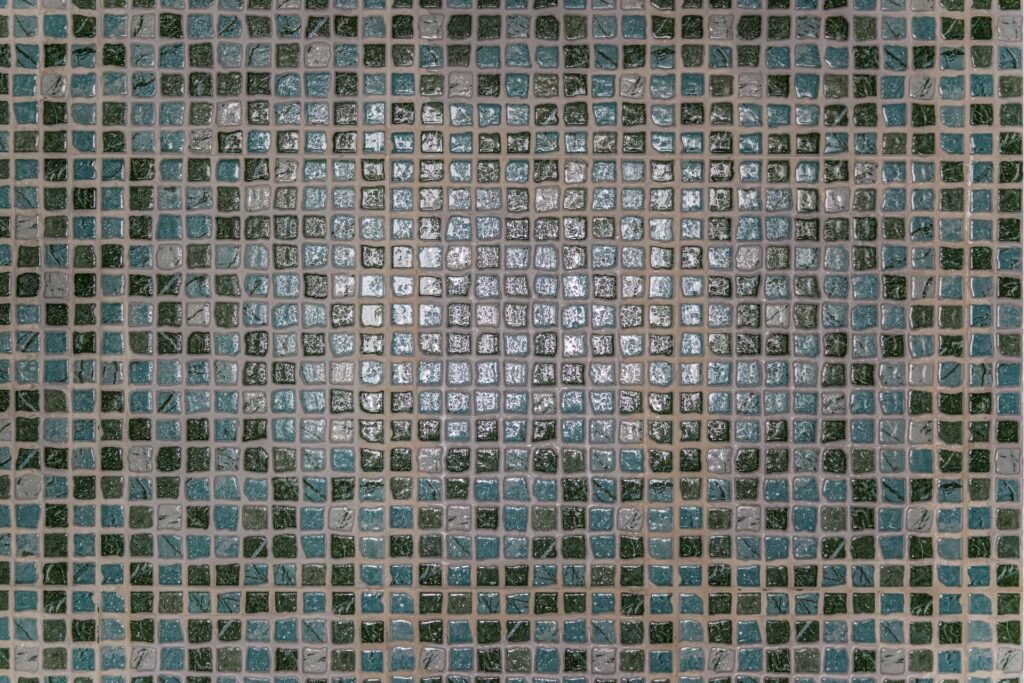
Environmental Impact Of Bathroom Wall Materials
The environmental impact of the materials used in bathroom walls is an increasingly important consideration for homeowners today, especially in a world where sustainable living is gaining momentum. In this section, we’ll explore eco-friendly options for bathroom walls and how New Zealand homeowners can make informed, environmentally conscious choices.
Eco-Friendly Options
When it comes to eco-friendly bathroom wall materials, there are several options to choose from that promote sustainability without sacrificing style or durability.
1. Recycled Glass Tiles: Recycled glass tiles are a striking option for bathroom walls. Not only are they made from recycled glass products, but they also offer a sleek, modern aesthetic that can elevate any bathroom. By using recycled materials, homeowners help reduce landfill waste and the energy consumption involved in producing new materials. Plus, these tiles are available in a wide variety of colors and patterns, giving plenty of design flexibility.
2. Bamboo Panels: Bamboo is one of the most renewable resources on the planet, making it an excellent choice for eco-conscious homeowners. Bamboo grows rapidly and requires fewer resources to cultivate than traditional timber, which reduces its environmental footprint. Bamboo panels are lightweight, water-resistant when properly treated, and bring a natural, spa-like feel to the bathroom.
3. Eco-Friendly Paints: Traditional paints often contain volatile organic compounds (VOCs) that can harm the environment and human health. Opting for eco-friendly paints with low or no VOCs is a simple way to reduce the environmental impact of your bathroom renovation. These paints are non-toxic, have fewer harmful emissions, and still provide vibrant color and protection for your bathroom walls.
4. Cork Wall Coverings: Cork is another sustainable material that’s both renewable and biodegradable. Cork wall coverings offer a unique texture and warmth while also being resistant to moisture and mold, which are key considerations in bathroom environments. Additionally, cork is a great insulator, making it energy efficient as well.
Considerations for New Zealand Homeowners
For New Zealand homeowners, access to sustainable materials is fortunately becoming easier as demand for eco-friendly products rises. However, there are several key factors to keep in mind when making choices that balance environmental responsibility with practical needs.
1. Availability of Sustainable Materials: In New Zealand, many eco-friendly bathroom wall materials such as recycled glass tiles and bamboo panels are readily available through specialized suppliers and home improvement stores. It’s worth noting that sourcing locally manufactured or imported products with strong eco-credentials can further reduce the carbon footprint associated with transportation.
2. Durability and Maintenance: When selecting sustainable materials, it’s crucial to consider their long-term durability. Materials that last longer and require minimal upkeep tend to have a lower environmental impact over their lifespan. For instance, recycled glass tiles and properly treated bamboo panels are known for their resilience in high-moisture environments like bathrooms.
3. Cost vs. Environmental Benefits: For homeowners in New Zealand, balancing cost and environmental benefits is an important factor. While eco-friendly materials might have a higher upfront cost, their durability and low maintenance can save money in the long run. Moreover, New Zealanders are increasingly eligible for government subsidies and grants that incentivize eco-friendly home renovations, making these sustainable options more financially accessible.
4. Eco-Certifications: Look for certifications such as Environmental Choice New Zealand or other recognized labels that guarantee the materials you’re choosing meet specific environmental standards. These certifications help ensure that the products are genuinely sustainable and not just marketed as “green” without substantial backing.
Making eco-conscious decisions when selecting bathroom wall materials can have a significant impact on both the environment and your personal living space. With a growing range of eco-friendly options now available in New Zealand, homeowners have the opportunity to reduce their carbon footprint while creating a stylish, functional, and sustainable bathroom. By considering factors like material availability, durability, and cost, you can ensure that your renovation aligns with both your environmental values and practical needs.

Design And Style Inspiration
Trending Bathroom Styles in NZ
Bathroom styles in New Zealand are evolving, with homeowners embracing a blend of traditional influences and modern aesthetics. Some of the most popular styles include.
- Modern Minimalism: This style is characterized by sleek lines, simple color schemes, and minimalistic fixtures. It’s all about creating a clutter-free space with a focus on function and form. Modern bathrooms often use materials like glass, chrome, and large-format tiles to achieve a clean and sophisticated look.
- Rustic Charm: On the opposite end of the spectrum, rustic bathrooms bring a warm, inviting feel to the space. Natural materials such as stone, timber, and exposed brick are often featured. These bathrooms lean on the beauty of imperfections and earthy tones, making them perfect for creating a cozy and relaxed atmosphere.
- Coastal Vibes: Inspired by New Zealand’s stunning coastlines, this style brings the outdoors inside with light colors, natural textures, and a focus on creating an airy, open feel. Materials like weathered timber, whitewashed tiles, and subtle blue or green accents are common. The goal is to evoke the serenity and calm of the beach.
Choosing the right materials can significantly enhance these styles. For example, using timber in a rustic design adds a natural warmth, while large glass panels in a modern bathroom can open up the space and create a more luxurious feel. By understanding the trending styles, you can select materials that not only fit your aesthetic but also add value and functionality to your bathroom.
Tips for Mixing Materials
Creating a unique bathroom design often involves mixing materials to achieve contrast and interest. However, it’s important to strike the right balance. Here are some tips for successfully combining different materials.
- Balance is Key: When mixing materials, balance them in a way that doesn’t overwhelm the space. For instance, if you’re combining timber and tiles, consider using tiles for the flooring and walls, while incorporating timber in cabinetry or shelving. This prevents one material from dominating the space.
- Choose Complementary Textures: When mixing materials, textures play a vital role in the overall design. Rough textures like natural stone can pair beautifully with smoother materials like polished marble or ceramic tiles. The contrast in texture adds depth and visual interest without clashing.
- Stick to a Cohesive Palette: While you’re free to experiment with different materials, sticking to a cohesive color palette will help unify the design. For instance, if you’re blending timber with tiles, ensure that the wood tones complement the color of the tiles, such as soft grays with light oak or dark tiles with rich walnut.
By following these tips, you can create a bathroom that feels both unique and harmonious. The key is to let one material shine while using the others as supporting elements, ensuring the space remains cohesive and visually appealing.
Color Schemes
The choice of materials in your bathroom can dramatically influence the color scheme and lighting. Here’s how different materials affect the overall aesthetic.
- Light and Bright: If your bathroom is on the smaller side, lighter materials can help make it feel larger and airier. For example, white or light-colored tiles combined with soft-colored timber can enhance natural light and create a spacious feel. This approach works particularly well in modern and coastal-style bathrooms where openness and light are key.
- Rich and Moody: For those looking to create a more intimate or dramatic bathroom, darker materials can be a great choice. Dark stone tiles paired with rich, stained timber can give the bathroom a moody, luxurious feel. However, it’s important to consider the lighting in the room—ensure that there’s enough light to prevent the space from feeling too cramped.
- Neutral Base with Accents: Many designers recommend starting with a neutral base, such as white or gray tiles, and then adding pops of color through accessories, such as towels, plants, or artwork. Materials like timber or stone in neutral tones can act as a backdrop, allowing you to change out your accent colors over time without needing to renovate the entire space.
When choosing your color scheme, think about how different materials will interact with your bathroom’s lighting—both natural and artificial. The material’s reflective properties, texture, and color all play a part in determining how light behaves in the space, affecting the room’s overall mood and feel.
By carefully selecting materials and coordinating them with your bathroom’s color scheme and lighting, you can create a beautiful and functional space that reflects your personal style and the latest trends in New Zealand bathroom design.

Best Practices For Installation And Maintenance
When it comes to bathroom installations, making the right choices during both the installation and ongoing maintenance phases can significantly impact the performance and lifespan of your materials. Let’s break this down into practical tips.
DIY vs. Hiring a Professional
The decision to handle your bathroom installation as a DIY project or to bring in a professional depends largely on the complexity of the task and the materials involved. For example, if you’re working with simpler materials like vinyl or laminate, a confident DIYer with basic tools may find the installation manageable. On the other hand, materials like tiles, stone, or other intricate designs can be tricky to get right. These require precision cuts, leveling, and proper grouting—factors that are critical to both appearance and durability.
For complex installations, particularly those involving stone or ceramic tiles, it’s often better to call in a professional. They will have the experience and equipment needed to ensure the job is done right, avoiding issues like uneven surfaces, water damage, or loose tiles down the road. Professional installers also come with the added benefit of warranties, meaning that if something does go wrong, you’re not left to deal with it on your own.
While DIY can save you money, it’s essential to assess the scope of the project. For straightforward tasks, DIY can be a satisfying and cost-effective route. For more complicated materials and installations, it’s worth the investment to hire a professional.
Maintenance Tips
Once the installation is complete, proper maintenance is key to keeping your bathroom materials looking fresh and functioning well. Different materials will have specific maintenance needs.
- Tiles and Stone: Regular cleaning with mild, non-acidic cleaners is crucial. Harsh chemicals can damage grout and degrade sealants over time. Sealing is another vital step, especially for porous stones like marble or granite. Re-seal these surfaces every 1-2 years to prevent staining and moisture penetration.
- Vinyl and Laminate: These materials are relatively low-maintenance. Regular sweeping and occasional mopping with a damp cloth will keep them clean. Be cautious with excess water, as standing water can seep into seams and cause damage. Avoid abrasive cleaners to prevent surface scratches.
- Wood and Composite: Wood materials in bathrooms should be kept dry as much as possible. Wipe down any spills immediately and regularly apply a sealant or protective finish to maintain water resistance. Composite materials mimic wood but offer better moisture resistance; they still benefit from occasional cleaning with gentle soap and water.
By following these maintenance routines, you’ll help ensure your bathroom materials stay in good shape for years to come.
Common Mistakes to Avoid
Mistakes during installation and maintenance can lead to costly repairs or diminished aesthetic appeal. Here are a few common errors and how to avoid them.
- Skipping Surface Preparation: One of the most common installation mistakes is failing to properly prepare surfaces before laying down new materials. This includes ensuring the subfloor is level for tiles or that walls are clean and dry before installing waterproofing membranes. Taking shortcuts in this phase can result in an uneven or unstable surface.
- Using the Wrong Products: Using incorrect cleaning products can do more harm than good. For example, acidic cleaners may seem like a great way to remove grime but can cause permanent damage to natural stone and grout. Always choose cleaning products that are compatible with your material.
- Neglecting Sealing: Failing to seal porous materials like stone or grout can lead to moisture seeping in, causing stains, mold, and deterioration. Regularly check the sealant’s integrity and reapply when necessary to keep water out.
Avoiding these mistakes will save you from potential headaches and extend the life of your bathroom materials.
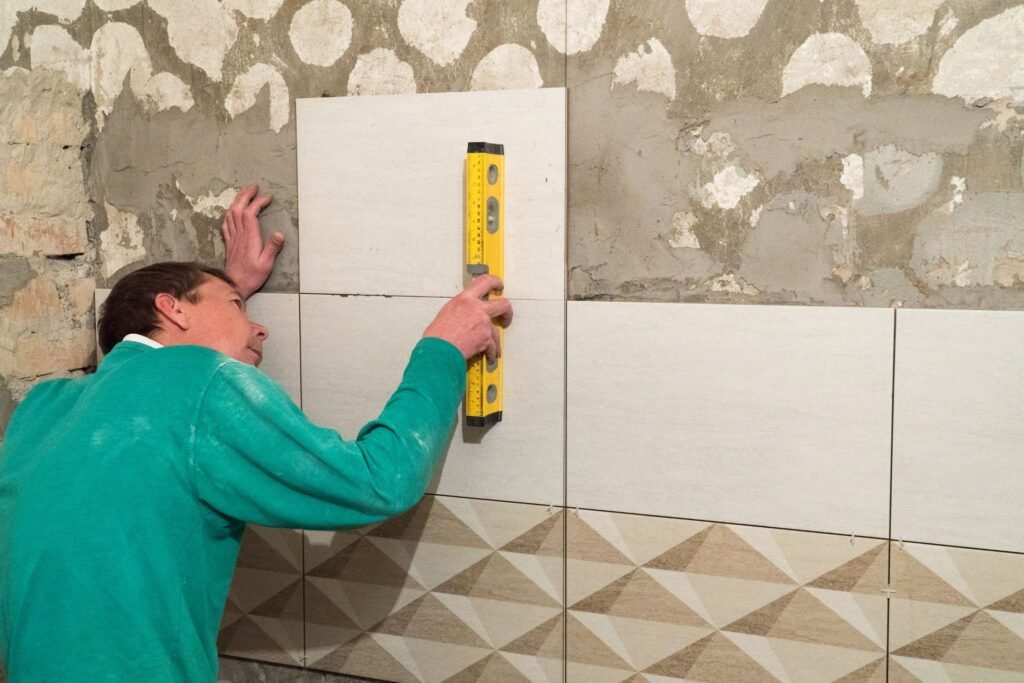
FAQs: About Best Material For Bathroom Walls NZ
What is the best material for bathroom walls in New Zealand?
The best material for bathroom walls in New Zealand depends on your specific needs. Tiles, acrylic panels, PVC panels, and waterproof paint are all popular options. Tiles are known for their moisture resistance and durability, while acrylic panels are a budget-friendly and easy-to-maintain alternative.
What are the most affordable bathroom wall materials?
Acrylic panels, PVC panels, and waterproof paint are among the most affordable materials for bathroom walls. These options provide good moisture resistance at a lower cost compared to tiles or stone veneer, making them suitable for budget-conscious homeowners.
How do I choose a bathroom wall material for a high-humidity environment?
In high-humidity environments, moisture resistance is key. Materials like tiles, stone veneer, and acrylic panels are ideal because they resist water damage and mold growth. Always choose materials specifically designed for wet areas to ensure long-lasting performance.
Can I install bathroom wall materials myself, or do I need a professional?
Some bathroom wall materials, like waterproof paint or PVC panels, can be installed by DIY enthusiasts. However, more complex materials like tiles or stone veneer typically require professional installation to ensure proper sealing and durability, especially in high-moisture areas.
How do I maintain bathroom wall materials?
Maintenance depends on the material. Tiles may require grout cleaning and resealing, while acrylic and PVC panels only need regular wiping with mild cleaning solutions. Stone veneer may need occasional sealing to maintain its appearance and durability. Always follow manufacturer recommendations for best results.
Are there eco-friendly bathroom wall material options?
Yes, eco-friendly options are available, such as recycled glass tiles or water-based, low-VOC waterproof paints. These materials are better for the environment and offer comparable durability and aesthetics to traditional materials.
What bathroom wall materials are best for a small bathroom?
For small bathrooms, lighter colors and reflective materials like glass panels or light-colored tiles can help make the space feel larger. PVC panels and acrylic are also good options for maximizing space while keeping the area moisture-resistant.
Can I mix different bathroom wall materials in one space?
Yes, mixing materials like tiles and timber cladding or glass panels and waterproof paint can add texture and visual interest to your bathroom. Just ensure that the materials are compatible in terms of moisture resistance and maintenance.
What is the most durable bathroom wall material?
Tiles and stone veneer are considered the most durable materials for bathroom walls. They are moisture-resistant and can last for decades with proper maintenance, making them excellent choices for high-traffic bathrooms or long-term investments.
How much does it cost to install bathroom wall materials in New Zealand?
The cost varies widely depending on the material. Tiles and stone veneer are typically more expensive due to the cost of materials and installation, while acrylic panels and waterproof paint are more budget-friendly. Installation fees may also vary based on the complexity of the job and location.
Conclusion
In conclusion, when choosing bathroom wall materials, it’s essential to balance style, durability, and budget to create a space that not only looks great but also stands the test of time. Take time to reflect on your specific needs, budget constraints, and design preferences before making a final decision, ensuring the best fit for your home and lifestyle. Planning ahead can prevent costly mistakes and ensure a smoother renovation process. For those ready to take the next step, now is the perfect time to explore various options, request quotes from local suppliers, or consult with a professional to guide your bathroom transformation.
About the Author:
Mike Veail is a recognized digital marketing expert with over 6 years of experience in helping tradespeople and small businesses thrive online. A former quantity surveyor, Mike combines deep industry knowledge with hands-on expertise in SEO and Google Ads. His marketing strategies are tailored to the specific needs of the trades sector, helping businesses increase visibility and generate more leads through proven, ethical methods.
Mike has successfully partnered with numerous companies, establishing a track record of delivering measurable results. His work has been featured across various platforms that showcase his expertise in lead generation and online marketing for the trades sector.
Learn more about Mike's experience and services at https://theleadguy.online or follow him on social media:

